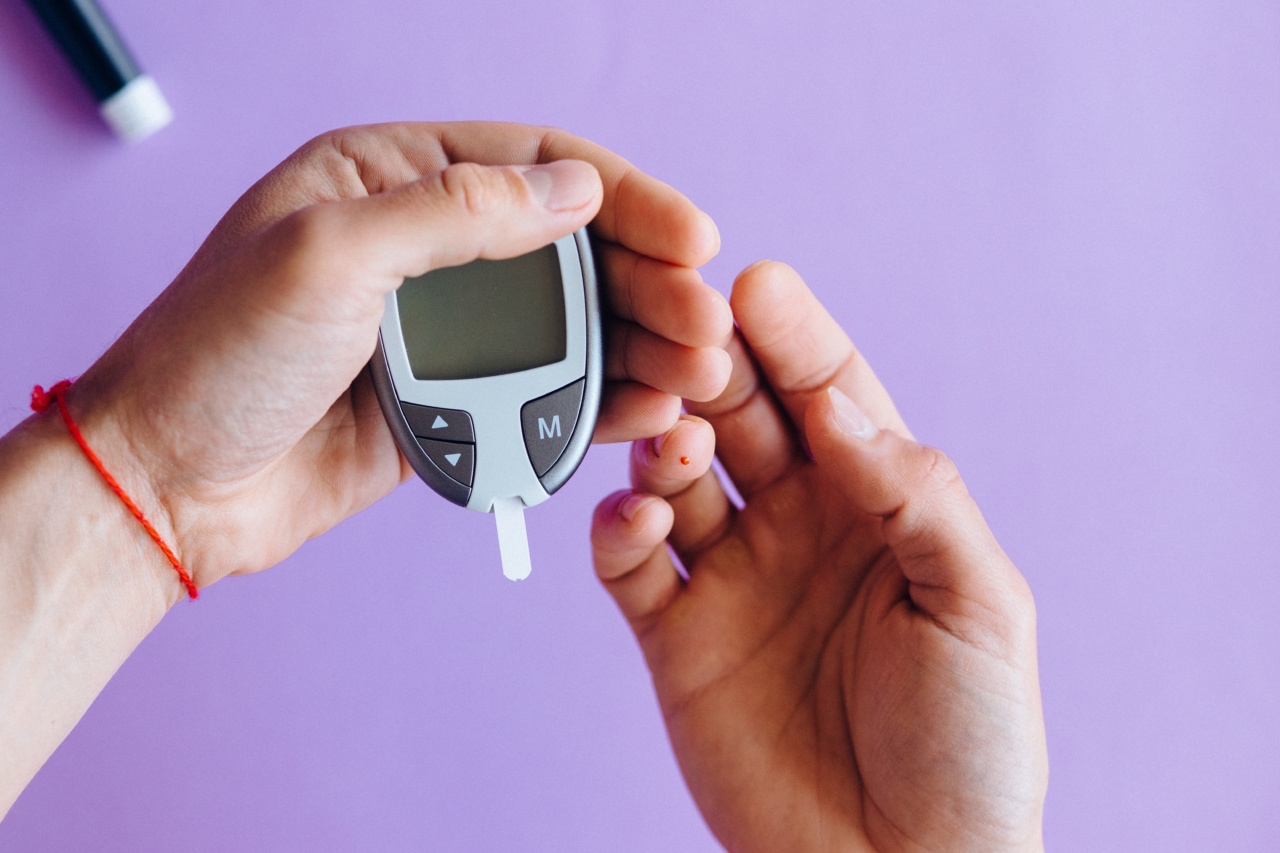When it comes to managing our health and reducing the risk of various health conditions, blood sugar control is a crucial aspect. High blood sugar levels can lead to numerous complications, including diabetes, heart disease, and obesity.
While it is widely known that excess sugar and refined carbohydrates can contribute to elevated blood sugar, the role of saturated fats in this equation is often misunderstood. In this article, we will explore the impact of saturated fats on blood sugar levels and provide actionable tips to help lower your risk.
The Basics of Saturated Fats
Saturated fats are a type of dietary fat that are solid at room temperature. They are primarily found in animal products such as meat, poultry, dairy products, and certain plant-based oils like coconut and palm oil.
Saturated fats have long been associated with an increased risk of heart disease, largely due to their impact on cholesterol levels.
Saturated Fats and Blood Sugar Levels
Contrary to popular belief, there is limited evidence linking saturated fats directly to blood sugar levels. Unlike carbohydrates, which are broken down into glucose and rapidly raise blood sugar, fats do not have a direct effect on blood sugar.
However, this does not mean that saturated fats are entirely benign when it comes to managing blood sugar levels.
Understanding Insulin Resistance
Insulin is a hormone produced by the pancreas that allows cells in the body to absorb glucose from the bloodstream and use it for energy.
In individuals with insulin resistance, the cells become less responsive to the effects of insulin, leading to elevated blood sugar levels. Insulin resistance is a key factor in the development of type 2 diabetes.
The Link between Saturated Fats and Insulin Resistance
While saturated fats themselves may not directly raise blood sugar levels, they have been shown to contribute to insulin resistance.
Studies have suggested that a high intake of saturated fats can interfere with insulin signaling, making cells less receptive to its effects. This can lead to increased insulin levels in the bloodstream and ultimately higher blood sugar levels.
The Role of Unsaturated Fats
In contrast to saturated fats, unsaturated fats have been found to have a positive impact on blood sugar control.
Monounsaturated fats, found in foods such as olive oil, avocados, and nuts, have been linked to improved insulin sensitivity and reduced risk of developing type 2 diabetes. Similarly, polyunsaturated fats, found in fatty fish, seeds, and certain oils, have been associated with better blood sugar management.
Practical Tips for Lowering Your Risk
While it is not necessary to completely eliminate saturated fats from your diet, it is important to consume them in moderation and focus on healthier fat sources.
Here are some practical tips to help lower your risk of insulin resistance and maintain healthy blood sugar levels:.
1. Choose Lean Protein Sources
When consuming animal products, opt for lean cuts of meat, skinless poultry, and low-fat dairy options. This can help reduce your intake of saturated fats while still providing essential nutrients.
2. Incorporate Plant-Based Protein
Increase your intake of plant-based protein sources like legumes, tofu, and tempeh. These foods are not only low in saturated fats but also high in fiber, which can aid in blood sugar control.
3. Be Mindful of Cooking Methods
When preparing meals, choose cooking methods that require less added fats, such as baking, grilling, steaming, or stir-frying with minimal oil. Avoid deep-frying or using excessive amounts of oil.
4. Emphasize Healthy Fats
Incorporate more monounsaturated and polyunsaturated fats into your diet. Avocados, olive oil, nuts, seeds, and fatty fish like salmon are excellent sources of healthy fats that can support blood sugar control.
5. Increase Fiber Intake
Consuming an adequate amount of fiber is essential for maintaining blood sugar levels within a healthy range. Focus on whole, unprocessed foods such as fruits, vegetables, whole grains, and legumes, which are rich in fiber.
6. Limit Highly Processed Foods
Foods high in saturated fats are often found in highly processed products such as pastries, fried snacks, and fast food. These items are typically low in nutritional value and can contribute to insulin resistance and elevated blood sugar levels.
7. Pay Attention to Portion Sizes
While fats are an essential part of a balanced diet, they are still calorie-dense. Be mindful of portion sizes to avoid excessive calorie intake, which can lead to weight gain and negatively affect blood sugar control.
8. Focus on Overall Dietary Pattern
It is important to remember that individual nutrients and dietary components do not act in isolation.
A healthy dietary pattern that includes a variety of whole foods, lean proteins, healthy fats, and unrefined carbohydrates is key for overall blood sugar control.
9. Monitor Your Blood Sugar Levels
If you have concerns about your blood sugar levels or risk of developing insulin resistance, it is advisable to monitor your blood sugar regularly. This can help you identify any changes or patterns and allow for timely intervention.
10. Consult with a Healthcare Professional
If you have specific health concerns or are unsure about how to best manage your blood sugar levels, it is always advisable to consult with a healthcare professional.
They can provide personalized advice and guidance based on your individual circumstances.



























